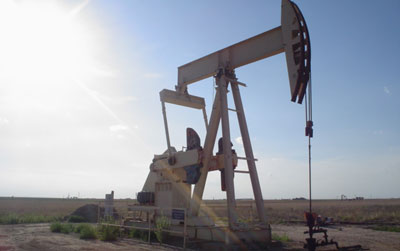Oil prices rise on the heels of sharp losses; production data ahead

Crude oil prices rose slightly on Tuesday, though investors are eagerly awaiting production and inventory data from the Organization of the Petroleum Exporting Countries.
On the New York Mercantile Exchange, light, sweet crude futures for delivery in March CLH7, -0.28% last traded at $53.11 a barrel, up $0.10 in the Globex electronic session. April Brent crude LCOJ7, -0.23% on London’s ICE Futures exchange rose $0.12 to $55.84 a barrel.
On Monday, oil prices suffered their biggest one-day loss since mid-January, weighed by a strengthening dollar. The oil business is conducted in dollars and when the currency strengthens, oil becomes more expensive for foreign traders and buyers. The dollar was last up 0.09% at 90.43, according to the WSJ Dollar Index.
Despite the recent fall, prices are still double where they were a year ago. Most market participants expect prices to rise as they believe — unlike with past production-cut deals — this time, participating nations are sticking to their production quotas, at least for now. If fully implemented, the deal could wipe out about 1.8 million barrels a day from the global daily supply and push the market into a supply shortage as early as the third quarter.
OPEC production data will be released on Monday.
Many investors are also watching the escalating rivalry between the U.S. and Iran after the Middle Eastern oil producer recently conducted a mid-range ballistic missile test. The U.S. said the launch breached the nuclear deal Tehran signed with major world powers. The Trump administration responded by slapping sanctions against a number of Iranian companies and individuals. Tehran quickly reacted with its own plan to impose reciprocal measures, including legal restrictions on U.S. nationals and companies.
While Iran’s oil industry was untouched by the latest sanctions, the renewed spat amplifies the risk of a new conflict in the region and could result in supply disruptions.
“If the U.S. were indeed to rescind the nuclear agreement, this would not have any immediate impact on the oil market initially because the U.S. does not import any oil from Iran in any case. Nonetheless, it could then make it more difficult for Western oil companies to invest in Iran — investment that is vital for Iran’s future oil production,” Commerzbank said in a note.
The U.S. could also put pressure on other countries to either halt or reduce their purchases of Iranian oil, the bank added.
In the short term, traders and analysts are eyeing the uptrend in U.S. oil drilling and stockpiling of crude and petroleum products. A survey by S&P Global Platts estimates U.S. crude inventories rose by 2.5 million barrels in the most recent week, while gasoline stocks also rose by 1.2 million barrels.
“A likely rebound in U.S. crude oil production may have pushed stocks higher last week… after the U.S. oil rig count rose by 61 rigs over the last three weeks, there are expectations that production will climb higher,” the firm said.
Official data from the Energy Information Administration is slated for release on Wednesday.
Nymex reformulated gasoline blendstock for March CLH7, -0.28% — the benchmark gasoline contract — rose 18 points to $1.5121 a gallon, while March diesel traded at $1.6403, 51 points higher.
ICE gasoil for February changed hands at $491.50 a metric ton, down $3.00 from Monday’s settlement.
sourc: MarketWatch – Oil prices rise on the heels of sharp losses; production data ahead




























